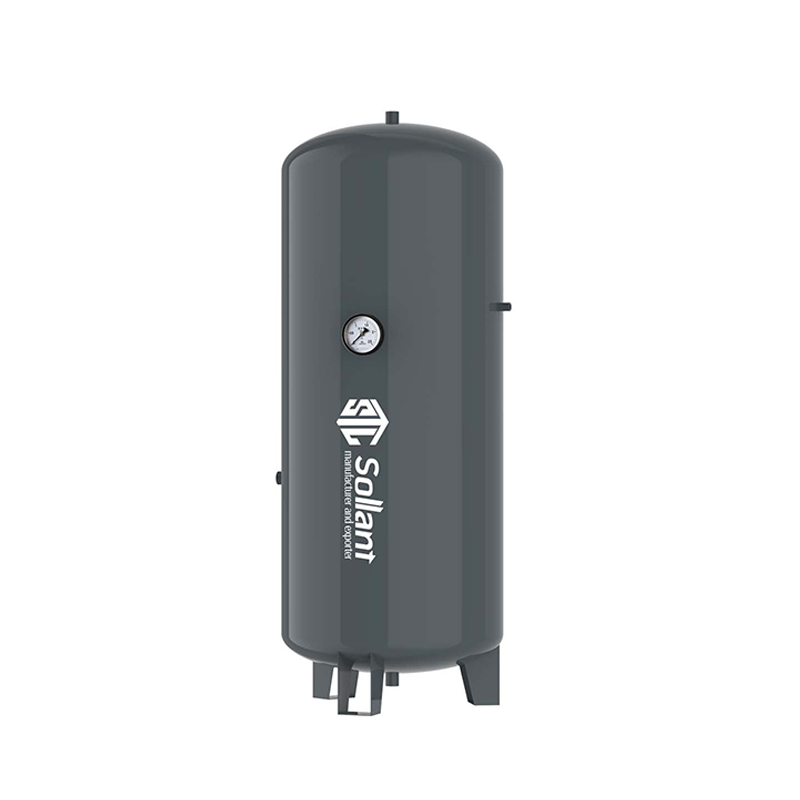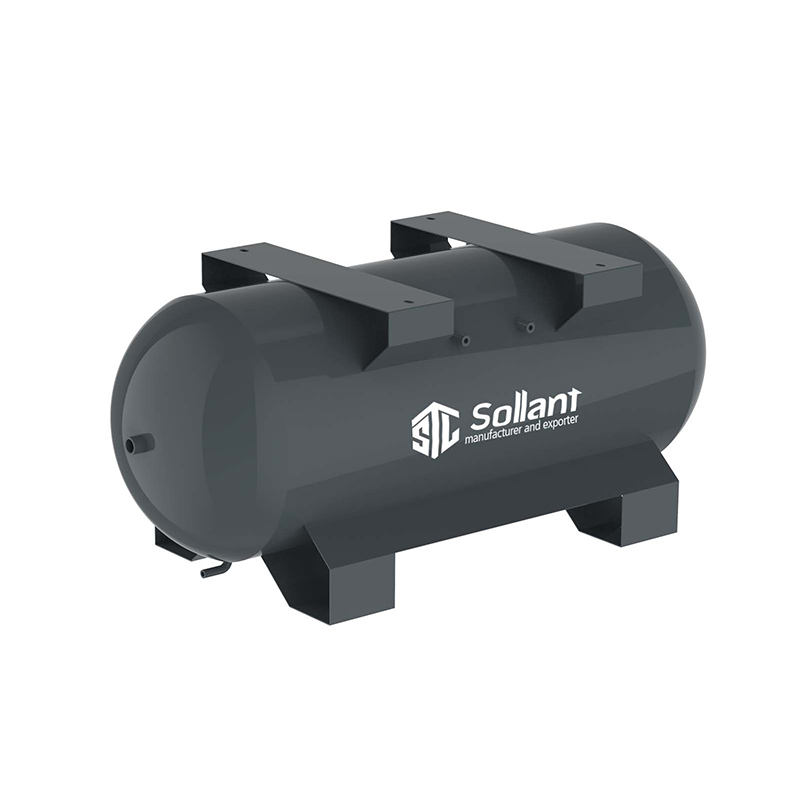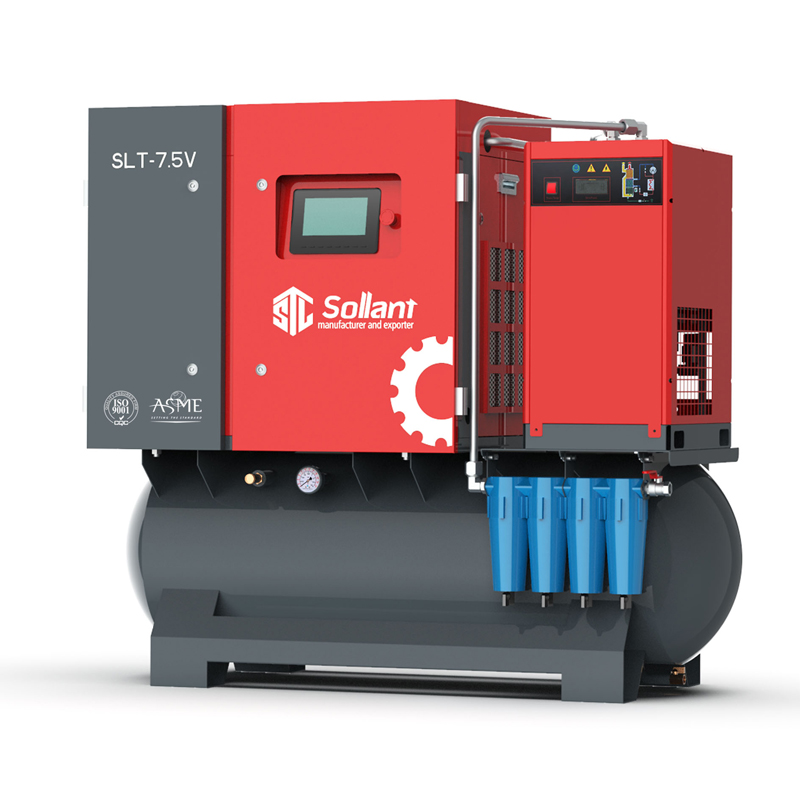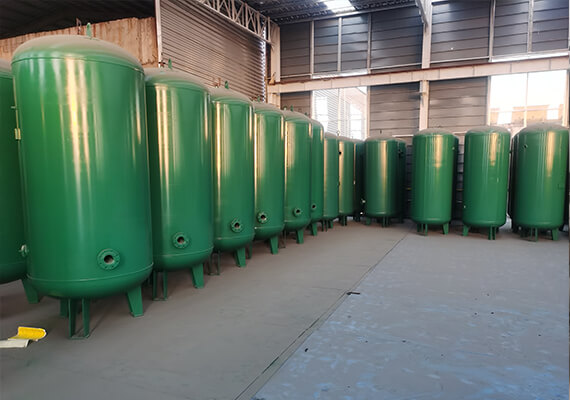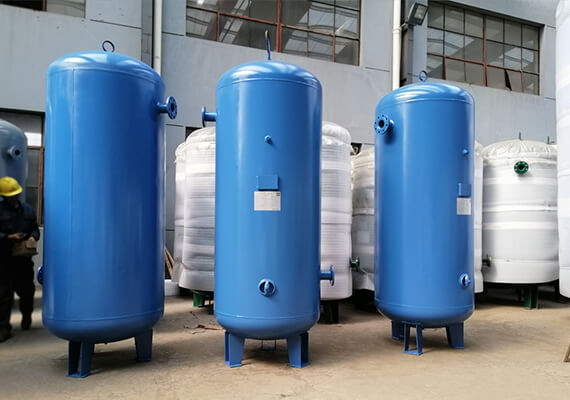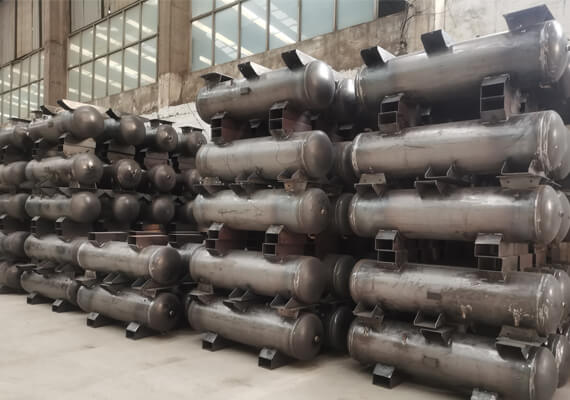Air Compressor Air Tank Manufacturer
and Supplier in Turkey
As an important form of energy generation, the tank mounted air compressor is widely used in all aspects of life and production. Sollant air compressor tank is durable and its appearance is made of high-quality cold-rolled steel plate cover. There are two types: vertical air compressor tank and horizontal air compressor tank. It adopts a spray molding process and high-temperature baking at 250 ° C. It is corrosion-resistant and durable for a long time.
The electrical components of the air compressor tank are components of the world-famous brand Schneider Electric/ABB, with silver contacts, the service life is more than 3 million times, and the safe use is guaranteed for a long time. The bearings of the air compressor replacement tank are imported from Switzerland, which better improves the use efficiency of the host machine, reduces wear, and helps increase the smoothness of the meshing.
| Model | SLT0.3/0.8 | SLT0.3/0.8 | SLT0.3/1.3 | SLT0.6/0.8 | SLT0.6/1.0 | SLT0.6/1.3 | SLT1.0/0.8 | SLT1.0/1.0 | SLT1.0/1.3 | |
|---|---|---|---|---|---|---|---|---|---|---|
| Volume(m3) | 0.3 | 0.3 | 03 | 0.6 | 0.6 | 0.6 | 1.0 | 1.0 | 1.0 | |
| Working pressure(MPa) | 0.8 | 1.0 | 1.3 | 0.8 | 1.0 | 1.3 | 0.8 | 1.0 | 1.3 | |
| Extenal dimensions | Height(mm) | 1760 | 1760 | 1602 | 2025 | 2025 | 2025 | 2170 | 2170 | 2170 |
| Inner diameter(mm) | 500 | 500 | 550 | 650 | 650 | 650 | 800 | 800 | 800 | |
| Thickness(mm) | 3.0 | 3.5 | 5.0 | 3.5 | 4.0 | 5.0 | 4.0 | 4.5 | 5.0 | |
| Inlet connection | Size(mm) | DN25 | DN25 | DN25 | DN40 | DN40 | DN40 | DN40 | DN40 | DN40 |
| Height(mm) | 636 | 636 | 636 | 672 | 672 | 672 | 720 | 720 | 720 | |
| Outlet connection | Size(mm) | DN25 | DN25 | DN25 | DN40 | DN40 | DN40 | DN40 | DN40 | DN40 |
| Height(mm) | 1166 | 1166 | 1166 | 1442 | 1442 | 1442 | 1720 | 1720 | 1720 | |
| Weight(kg) | 75 | 81 | 98.6 | 98.6 | 140 | 160 | 160 | 175 | 232 | |
| Model | SLT2.0/0.8 | SLT2.0/1.0 | SLT2.0/1.3 | SLT3.0/0.8 | SLT3.0/1.0 | SLT3.0/1.3 | SLT5.0/0.8 | SLT5.0/1.0 | SLT5.0/1.3 | |
|---|---|---|---|---|---|---|---|---|---|---|
| Volume(m3) | 2.0 | 2.0 | 2.0 | 3.0 | 3.0 | 3.0 | 5.0 | 5.0 | 5.0 | |
| Working pressure(MPa) | 0.8 | 1.0 | 13 | 0.8 | 1.0 | 1.3 | 0.8 | 1.0 | 1.3 | |
| Extenal dimensions | Height(mm) | 2874 | 2874 | 2878 | 2950 | 2950 | 2950 | 3787 | 3787 | 3787 |
| lnner diameter(mm) | 1000 | 1000 | 1000 | 1200 | 1200 | 1200 | 1400 | 1400 | 1400 | |
| Thidkness(mm) | 4.0 | 4.5 | 6.0 | 5.0 | 6.0 | 8.0 | 5.0 | 6.0 | 8.0 | |
| Inlet connection | Size(mm) | DN50 | DN50 | DN50 | DN80 | DN80 | DN80 | \ \ DN100 | DN100 | DN100 |
| Height(mm) | 849 | 849 | 849 | 760 | 760 | 760 | 936 | 936 | 936 | |
| Outlet connection | Size(mm) | DN50 | DN50 | DN50 | DN80 | DN80 | DN80 | \ \ DN100 | DN100 | DN100 |
| Height(mm) | 1949 | 1949 | 1949 | 2080 | 2080 | 2080 | 2236 | 2236 | 2236 | |
| Weight(kg) | 308 | 332 | 469 | 500 | 592 | 762 | 742 | 867 | 1120 | |
Air Compressor Air Tank Manufacturer Since 2002
Develop Your Business with Sollant
Air Compressor Air Tank
The Air compressor tank is a reservoir of compressed air that can be used during peak demand. It removes water from the compressor system by cooling the air. Within an air compressor auxiliary tank, It can significantly reduce the air cushion.
The air compressor tank occupies an important position in the work of the air compressor. The vertical air compressor tank makes the gas supply more stable, reduces the frequent start of the air compressor, and thus achieves the effect of energy-saving. At the same time, let the compressed air precipitate in the air compressor storage tank is more conducive to water and pollution removal.Sollant offers 0.6 ~ 2.0 m³/600 ~ 20000-liter tank. US$300.00 ~ US$600.00 cheap price for you to choose from. Low MOQ, high-quality.
How important is it?
Sollant has its own unique design concept and better quality assurance for air compressor tanks.
- Store air to meet the sudden increase in gas consumption of gas equipment.
- Store air and eliminate the pulsation of air-flow in the pipeline;
- Cool the air initially to let some liquid water out.
- It can guarantee the automatic shutdown of the air compressor.
- Power saving and cost reduction.
- More stable operation of air compressor with an air compressor tank.
Keep us Update on Latest Air Compressor Newsletter
Choosing the Right Air Tank for Your Air Compressor: Key Considerations
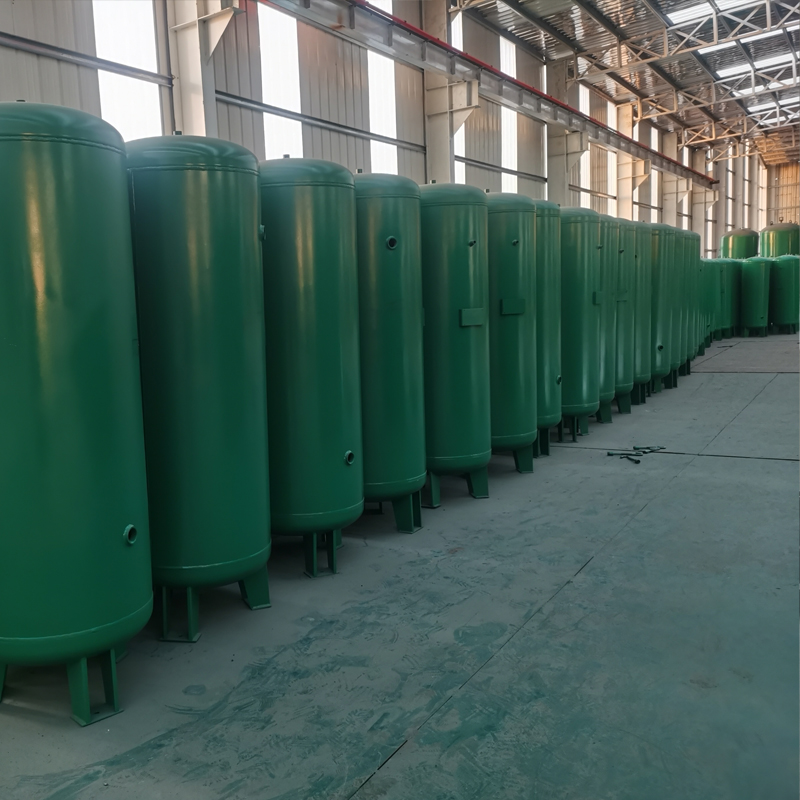
Air compressors play a crucial role in various industries and applications, serving as reliable sources of compressed air that power tools, machinery, and equipment. However, what often goes unnoticed is the pivotal role of air tanks within these compressor systems.
Air tanks, also known as pressure vessels or air receivers, are essential components that significantly contribute to the performance, efficiency, and safety of air compressor setups. In this article, we will delve into the significance of air tanks, highlighting how selecting the right one can have a profound impact on the overall functionality of an air compressor system.
Importance of Air Tanks in Air Compressor Systems
Imagine an air compressor system without an air tank—a constant on-and-off cycling of the compressor motor to match the instantaneous demand for compressed air. This continuous cycling not only strains the compressor motor but also results in pressure fluctuations that can affect the stability of downstream applications. This is where air tanks step in as unsung heroes, providing a buffer of compressed air that helps regulate pressure variations, ensure consistent airflow, and reduce the frequency of compressor motorcycling.
Impact of Selecting the Right Air Tank
Selecting the appropriate air tank for your air compressor system is not a mere technical choice; it’s a decision that has far-reaching implications for the system’s overall performance and efficiency. An air tank that matches the compressor’s specifications optimally can help achieve a balanced airflow, prevent excessive wear and tear on the compressor motor, and improve the longevity of the entire system. Conversely, an ill-fitting or undersized air tank can lead to pressure inconsistencies, increased energy consumption, and even premature equipment failure.
Overview of Key Considerations
As we explore the realm of air tanks and their significance, we will delve into several key considerations that should guide your decision-making process. These considerations include:
- Air Tank Size and Capacity: The size and capacity of the air tank determine the amount of compressed air it can store and discharge. We will discuss how to calculate the ideal tank size based on your compressor’s cubic feet per minute (CFM) rating and the intended applications.
- Working Pressure: The working pressure of the air tank should align with the operating pressure range of your compressor. We’ll explore how maintaining this balance ensures smooth and efficient performance.
- Material and Construction: Different materials, such as steel and aluminum, impact the durability and weight of the air tank. We will weigh the pros and cons of various materials to help you make an informed choice.
- Portability and Installation: Depending on your needs, you might require a portable or stationary air tank. We’ll discuss the significance of portability and the installation considerations for different types of tanks.
- Safety Features and Regulations: Air tanks come equipped with safety features such as pressure relief valves and pressure gauges. We’ll touch on the importance of these features and any relevant safety regulations to ensure a secure operating environment.
Understanding the Role of Air Tanks in Air Compressors
Air tanks, often referred to as air receivers or pressure vessels, serve as integral components within air compressor systems. While the compressor generates compressed air, the air tank plays a crucial role in storing and distributing this pressurized air to downstream applications. Essentially, air tanks act as reservoirs of compressed air, ensuring a steady supply of air with consistent pressure for various tools and machinery.
When the air compressor is in operation, it generates compressed air and delivers it to the air tank. The air tank stores this pressurized air, functioning as a buffer that reduces the abrupt pressure variations produced by the compressor’s on-and-off cycles. As the air tank fills with compressed air, the pressure inside increases. When the pressure reaches a certain upper limit, the compressor stops running, preventing over-pressurization. On the other hand, when the pressure in the tank drops below a certain lower limit, the compressor restarts to replenish the air supply. This cyclic process, facilitated by the air tank, ensures a consistent and regulated air pressure output.
The utilization of air tanks in air compressor systems offers a range of benefits that contribute to the overall efficiency and functionality of the setup:
- Reduced Wear and Tear: Without an air tank, the compressor motor would need to cycle frequently to match the instantaneous demand for compressed air. This constant cycling places strain on the motor, potentially leading to increased wear and tear over time. Air tanks alleviate this issue by allowing the compressor to operate in longer cycles, reducing the frequency of motor starts and stops.
- Stable Pressure Output: Pressure fluctuations can disrupt the performance of downstream tools and applications. Air tanks help maintain a steady pressure output, ensuring that tools operate consistently and efficiently without pressure variations affecting their functionality.
- Energy Efficiency: The use of air tanks results in more controlled and efficient compressor operation. With reduced motor cycling and smoother air delivery, energy consumption is optimized, translating to cost savings over the system’s lifespan.
- Enhanced Tool Performance: Tools and equipment reliant on compressed air benefit from a consistent air pressure supply. This enables tools to function optimally, produce higher-quality results, and prolong their operational lifespan.
- Enhanced Safety: The regulated pressure provided by air tanks minimizes the risk of sudden pressure spikes that could damage equipment or pose safety hazards.
In essence, air tanks act as stabilizers within air compressor systems, ensuring a reliable and steady supply of compressed air. Their ability to regulate pressure fluctuations, reduce wear on the compressor motor, and enable consistent airflow enhances the overall efficiency and longevity of the entire setup. As we move forward in this article, we’ll delve into the key considerations involved in selecting the right air tank to harness these benefits effectively.
Consideration 1: Air Tank Size and Capacity
When it comes to air tanks in air compressor systems, size truly matters. Selecting the right size and capacity of the air tank is a critical decision that directly influences the performance, efficiency, and overall functionality of the entire system. The size and capacity of the air tank determine how much-compressed air can be stored and delivered to downstream applications before the compressor needs to cycle again.
The size of the air tank directly affects the amount of compressed air available for use. A larger air tank can store a greater volume of compressed air, allowing tools and equipment to draw from the stored air before the pressure drops significantly. This results in longer periods of consistent pressure and reduced frequency of compressor motorcycles.
Conversely, a smaller air tank has a limited capacity to store compressed air. This can lead to more frequent compressor cycles as the pressure drops quickly with each use. Frequent cycling not only consumes more energy due to the repetitive starting and stopping of the compressor motor but also puts additional strain on the motor and components, potentially affecting their lifespan.
Calculating the ideal air tank size involves considering two key factors: the compressor’s Cubic Feet per Minute (CFM) rating and the intended applications. CFM indicates the volume of air that the compressor can deliver within a minute, reflecting its output capacity. Here are general guidelines to help calculate the ideal air tank size:
- Matching CFM: The air tank’s volume (measured in gallons) should be approximately 4-5 times the compressor’s CFM rating. This ensures that the tank can store enough air to support the tools or equipment’s air demands without frequent compressor cycles.
- Applications: Different applications have varying air consumption rates. Heavy-duty applications, such as industrial machinery, may require larger air tanks to accommodate their higher air demands, while smaller tanks may suffice for lighter applications.
- Pressure Requirements: Consider the required pressure for your applications. If higher pressure is needed, a larger air tank might be necessary to maintain consistent pressure during prolonged use.
- Duty Cycle: Determine the compressor’s duty cycle (the percentage of time it’s operating). If the compressor has a high duty cycle, a larger air tank may be beneficial to accommodate longer continuous usage periods.
By aligning the air tank’s size and capacity with the compressor’s CFM rating and the specific applications, you can ensure that the air tank effectively supports the demands of your tools and equipment. This strategic alignment optimizes performance, minimizes energy consumption, and extends the lifespan of your air compressor system. As we proceed, we will delve into additional considerations that contribute to choosing the right air tank for your specific needs.
Consideration 2: Working Pressure
2. Air receiver tank acting as a compressor control
The air collector tank gives a constant flow of air to compressor controls, hence eliminating short-cycling and over-pressurization.
Unsteady or uneven supply of the compressed air use causes uneven demand on the air compressor unit.
The resultant effect is rapid cycling by the compressor controls as the air compressor system turns on and off to meet the uneven demand of air.
Each time the compressor system turns on and off (or stacks/empties) is known as a “cycle”;
It is better for the air compressor to run on long cycles
After some time, visit short cycling will prompt untimely damage to the switches and other air compressor components.
Short cycling can bring about over the top wear of the air compressor motor contactor or even an immediate motor short on account of winding protection.
The air compressor holding tank disposes of short cycling and gives increasingly predictable and consistent pressure to controls.
In the context of air tanks and air compressor systems, working pressure refers to the level of pressure at which the air tank operates during normal usage. This pressure is determined by the demands of the applications the compressor serves and the specific tools or machinery that rely on the compressed air. The concept of working pressure is central to the safe and efficient operation of an air tank and its compatibility with the compressor setup.
Selecting an air tank with the appropriate working pressure is crucial to ensure harmonious functioning within the entire system. The working pressure of the air tank should align with the operating pressure range of the compressor. The operating pressure range is the span between the minimum and maximum pressure levels at which the compressor can safely and effectively deliver compressed air.
Maintaining a balance between the working pressure of the air tank and the compressor’s pressure settings is vital for several reasons:
- Safety: Operating an air tank at pressures significantly lower or higher than the compressor’s operating range can compromise safety. Low pressure might lead to inadequate air supply, affecting tool performance, while excessively high pressure can strain the tank and components, potentially leading to tank failure.
- Optimal Performance: Matching the working pressure to the compressor’s operating range ensures that the tank provides a consistent and reliable supply of air at the desired pressure. This consistency enhances the performance of tools and machinery, promoting efficient operation and quality results.
- Efficiency: When the working pressure aligns with the compressor’s operating range, the compressor can deliver air to the tank at the most efficient levels. This reduces energy consumption and extends the lifespan of the compressor motor.
- Longevity: Operating within the recommended pressure range minimizes stress on both the air tank and the compressor. This prolonged operational life is crucial for the longevity of your equipment investment.
To determine the appropriate working pressure for your air tank, consider the pressure requirements of the tools or applications you intend to power. The working pressure should not exceed the manufacturer’s recommended limits for safety reasons. By maintaining a balanced alignment between the working pressure and the compressor’s pressure settings, you optimize the performance, safety, and durability of your air compressor system. As we continue, we’ll explore additional factors that contribute to selecting the right air tank for your specific needs.
Consideration 3: Material and Construction
When selecting an air tank for your air compressor system, the choice of materials plays a significant role in determining the tank’s durability, performance, and safety. Commonly used materials for air tank construction include steel and aluminum, each with its own set of advantages and considerations.
- Steel:
Pros: Steel tanks are known for their durability and robustness, making them suitable for heavy-duty applications. They can withstand high pressures and mechanical stresses.
Cons: Steel tanks are often heavier than their aluminum counterparts, which can impact portability. Additionally, steel is susceptible to corrosion, especially if not properly coated or maintained.
- Aluminum:
Pros: Aluminum tanks are lightweight, making them ideal for applications where portability is essential. They also offer excellent corrosion resistance due to their natural oxide layer, which prevents rusting.
Cons: Aluminum tanks might not be as rugged as steel tanks, and they may have limitations in terms of maximum pressure and mechanical stress.
When choosing the material for your air tank, several factors should be taken into account:
- Corrosion Resistance: If the air compressor system operates in environments with high humidity or exposure to corrosive substances, corrosion resistance becomes paramount. Aluminum’s natural oxide layer offers protection, but steel tanks can be coated to enhance their corrosion resistance.
- Durability: For heavy-duty applications or environments with mechanical stresses, steel tanks are often preferred due to their robustness. Aluminum tanks are suitable for applications where weight reduction and corrosion resistance are key considerations.
- Weight: The weight of the tank affects portability, especially in applications where the compressor needs to be moved frequently. Aluminum’s lightweight nature makes it an attractive choice for portable systems.
Influence of Construction Quality on Longevity and Safety
Beyond the material itself, the construction quality of the air tank significantly impacts both its longevity and safety. Welding quality, seam integrity, and structural integrity are crucial factors. A well-constructed tank with proper welding ensures that the tank can withstand pressure and mechanical stresses without developing leaks or vulnerabilities.
Poor construction quality can compromise the tank’s structural integrity and contribute to safety hazards. Ensuring that the tank is built to high manufacturing standards helps prevent accidents and prolongs the tank’s lifespan.
Consideration 4: Portability and Installation
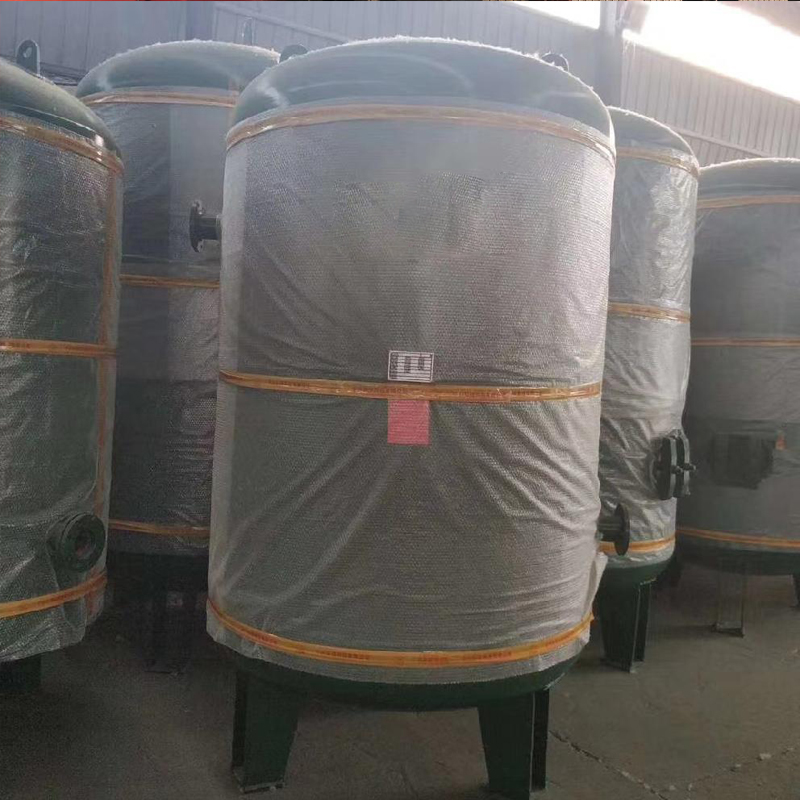
The consideration of portability is a crucial aspect when selecting an air tank for your air compressor system. The portability of the air tank is closely tied to the type of application it will be used for—whether it’s a stationary setup or a portable compressor system on the move.
Stationary Compressors: For applications where the compressor remains in a fixed location, such as industrial workshops or manufacturing facilities, the air tank’s portability might not be a primary concern. These systems can accommodate larger, heavier tanks that offer greater air storage capacity.
Portable Compressors: On the other hand, portable compressor systems demand air tanks that are lightweight and easily transportable. Construction sites, remote work locations, and mobile service operations rely on air tanks that can be moved from place to place without significant effort.
The installation process of an air tank involves connecting it to the air compressor and ensuring it is secured in a safe and stable manner. Different air tank models might have specific installation requirements based on their design and intended use. These requirements can include proper mounting points, pressure relief valve installation, and compatibility with the compressor’s output connections.
Modern air tank designs often incorporate convenience features that facilitate both transport and installation:
- Handles: Integrated handles provide a comfortable grip for lifting and moving the air tank, enhancing its portability.
- Wheels: Wheels allow the air tank to be rolled to different locations effortlessly, particularly beneficial for larger tanks used in portable compressor setups.
- Mounting Brackets: For stationary systems, mounting brackets enable secure attachment to walls or structures, optimizing space utilization.
Pressure Relief Valves and Gauges: Built-in pressure relief valves and pressure gauges enhance safety and simplify installation by ensuring accurate pressure readings and controlled pressure release.
Safety Features and Regulations
Safety features in air tanks are not just optional add-ons; they are essential components that ensure the secure operation of both the air tank and the entire air compressor system. Safety features play a vital role in preventing potential accidents, minimizing risks, and safeguarding the longevity of the equipment.
Pressure relief valves are integral safety components that automatically release excess pressure from the air tank. These valves prevent the air tank from becoming over-pressurized, which could lead to catastrophic failures or explosions. Pressure gauges provide real-time pressure readings, enabling operators to monitor the tank’s pressure levels and ensure they remain within safe limits.
Air tanks must adhere to specific safety regulations and standards to ensure their design, construction, and operation are in compliance with industry guidelines. Some of the relevant safety regulations and standards include:
ASME Boiler and Pressure Vessel Code: This widely recognized code sets the standards for the design, fabrication, and inspection of pressure vessels, including air tanks. It addresses critical safety aspects to prevent accidents due to structural failures.
OSHA (Occupational Safety and Health Administration): OSHA regulations include guidelines for the safe operation of air compressors and associated components, including air tanks. These regulations help prevent accidents, ensure worker safety, and maintain a secure work environment.
Local Codes and Standards: Depending on the region and industry, there might be additional codes and standards that govern the use of air tanks. These can vary based on factors such as pressure ratings, materials, and intended applications.
Safety features and adherence to safety regulations play a crucial role in preventing accidents that can result from pressure-related incidents or equipment failures. These features provide a layer of protection for both operators and equipment, reducing the risk of injury, damage, or downtime. Moreover, a safety-conscious approach contributes to the longevity of the air tank and the entire air compressor system.
Sollant: Your Professional Turkish Supplier for Screw Air Compressors and Post-Processing Equipment
In the realm of air compression technology, having a reliable supplier that offers top-notch equipment is essential. Sollant, a leading Turkish supplier, has established itself as a professional provider of screw air compressors and post-processing equipment.
With a commitment to quality, innovation, and customer satisfaction, Sollant has positioned itself as a trusted partner for businesses seeking optimal air compressor solutions.
The Advantages of Sollant’s Air Compressor Storage Tanks
Sollant’s product portfolio includes a range of air compressor storage tanks that stand out for their superior design, performance, and efficiency. These storage tanks play a pivotal role in maintaining stable air pressure, optimizing energy consumption, and extending the lifespan of air compressor systems. Let’s delve into the advantages that set Sollant’s air compressor storage tanks apart from the competition:
1. Enhanced Pressure Stability:
Sollant’s storage tanks act as reservoirs for compressed air, ensuring a steady supply of air with consistent pressure to downstream applications. The tanks mitigate pressure fluctuations that can affect the performance of tools and machinery. By providing a buffer of pressurized air, these storage tanks enhance the stability of the entire air compressor system.
2. Energy Efficiency:
Efficiency is a cornerstone of Sollant’s design philosophy. By integrating air compressor storage tanks, businesses can optimize their energy consumption. The tanks allow the air compressor to operate in longer cycles, reducing the frequency of motor starts and stops. This energy-efficient operation translates to cost savings over the lifespan of the equipment.
3. Reduced Wear and Tear:
Constant cycling of the compressor motor to meet instantaneous demand strains the motor and components. Sollant’s storage tanks alleviate this stress by reducing the frequency of compressor cycles. This results in decreased wear and tear on the motor, enhancing its longevity and minimizing maintenance requirements.
4. Extended Tool Lifespan:
Tools and equipment reliant on compressed air benefit from a consistent air pressure supply. Sollant’s storage tanks enable tools to operate optimally, producing higher-quality results and prolonging their operational lifespan. This advantage enhances the return on investment for businesses relying on air-powered tools.
5. Customized Solutions:
Sollant understands that each business has unique requirements. As such, their range of air compressor storage tanks comes in various sizes and capacities to cater to different applications. Whether for heavy-duty industrial operations or mobile service setups, Sollant offers customizable solutions to meet specific needs.
Sollant’s reputation as a professional Turkish supplier of screw air compressors and post-processing equipment is underscored by its commitment to quality and innovation. The advantages offered by Sollant’s air compressor storage tanks encapsulate the brand’s dedication to providing efficient, reliable, and tailored solutions to businesses across various industries.
With a focus on pressure stability, energy efficiency, reduced wear and tear, extended tool lifespan, and customization, Sollant’s storage tanks are integral components that elevate the performance and longevity of air compressor systems. When seeking top-quality air compression solutions, Sollant emerges as a partner you can trust.
Conclusion
Choosing the right air tank for your air compressor system is not a decision to be taken lightly—it’s a strategic choice that can significantly impact the performance, efficiency, and longevity of your entire setup. Throughout this article, we’ve explored key considerations that should guide your decision-making process, ensuring that the selected air tank aligns seamlessly with your specific needs and applications.
From the size and capacity of the air tank to the working pressure, material selection, portability, installation requirements, and safety features, each consideration contributes to the overall functionality of your air compressor system. A properly chosen air tank stabilizes pressure fluctuations, reduces wear and tear on the compressor motor, and enhances the performance of your tools and machinery.
By making an informed decision when selecting an air tank, you optimize the performance and efficiency of your air compressor system. An air tank that suits your compressor’s output, aligns with your applications, and adheres to safety regulations ensures a seamless operation that yields higher productivity and cost savings.
Before finalizing your air tank selection, take the time to carefully assess your compressor’s requirements and the demands of your applications. Evaluate the CFM rating, working pressure, and other specific factors that influence the compatibility of the air tank with your system. If needed, consult with experts who can provide valuable insights and recommendations based on their experience and expertise.
In the end, the right air tank goes beyond being just a component—it becomes a strategic asset that enhances your entire air compressor setup. So, whether you’re aiming for consistent pressure, energy efficiency, or long-term durability, remember that an air tank tailored to your needs can be the game-changer that elevates your compressor’s performance to new heights.
As you embark on your journey to select the perfect air tank, consider this article as a guide to navigate the intricacies and make a choice that contributes to the optimal functionality and longevity of your air compressor system.


